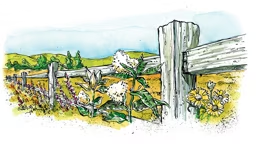– Ricky & Kim, Hayward, Wis.
A: According to the Organization for Bat Conservation, bat guano is no more toxic than any other feces. However, in large quantities it can be very dangerous. In arid conditions, a fungus (also found in some bird droppings) may grow on guano. If disturbed, spores of the fungus may be released into the air. Inhaling these spores can lead to histoplasmosis, a lung disease that can be fatal if left untreated. Note: If the guano is contained behind the wall paneling as you say, disturbing the spores is less likely.
When bats have taken up residence in the cabin for a long time, there can be a significant buildup of droppings and urine deposits. Over time, this can cause damage to your cabin’s insulation and leave stains on the ceilings and walls. At this point, the deposits may be distinguished by an intense odor (like you mentioned).
Since the guano poses a potential health threat and is altogether unpleasant, you may want to remove it from your cabin. However, because it is most dangerous when touched or ingested by humans, it is important to wear proper safety equipment (i.e. gloves, biohazard suit, full face mask with HEPA filter) during removal.
In most cases, the principles applied to the removal of asbestos also apply to the removal of bat guano.
To be on the safe side, hire professionals who specialize in bat guano removal. They often use specialized equipment to minimize contamination risk.
 Thinkstock.com
Thinkstock.com 






